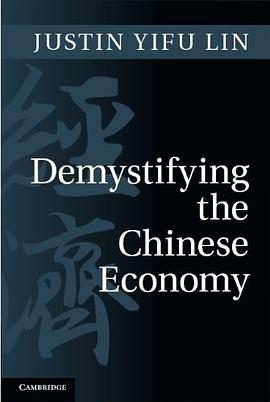Demystifying the Chinese Economy
内容简介
China was the largest and one of the most advanced economies in the world before the eighteenth century, yet declined precipitately thereafter and degenerated into one of the world's poorest economies by the late nineteenth century. Despite generations' efforts for national rejuvenation, China did not reverse its fate until it introduced market-oriented reforms in 1979. Since then it has been the most dynamic economy in the world and is likely to regain its position as the world's largest economy before 2030. Based on economic analysis and personal reflection on policy debates, Justin Yifu Lin provides insightful answers to why China was so advanced in pre-modern times, what caused it to become so poor for almost two centuries, how it grew into a market economy, where its potential is for continuing dynamic growth and what further reforms are needed to complete the transition to a well-functioning, advanced market economy.
......(更多)
作者简介
林毅夫,男,原名林正义(到大陆后改名),原北京大学中国经济研究中心主任、教授,博士生导师。中华人民共和国第七、八、九、十届政协全国委员会委员、全国政协经济委员会副主任、中华全国工商业联合会副主席,于2005年获选第三世界科学院院士,现任世界银行首席经济学家兼负责发展经济学的高级副行长。
......(更多)
目录
List of figures
List of tables
Preface
1 Opportunities and challenges in China's economic development
2 Why the Scientific and Industrial Revolutions bypassed China
3 The great humiliation and the Socialist Revolution
4 The comparative advantage-defying, catching-up strategy and the traditional economic system
5 Enterprise viability and factor endowments
6 The comparative advantage-following development strategy
7 Rural reform and the three rural issues
8 Urban reform and the remaining issues
9 Reforming the state-owned enterprises
10 The financial reforms
11 Deflationary expansion and building a new socialist countryside
12 Improving the market system and promoting fairness and efficiency for harmonious development
13 Reflections on neoclassical theories
Appendix Global imbalances, reserve currency, and global economic governance
Index
......(更多)
读书文摘
聪明人不一定有好奇心,但是有好奇心、懂得去观察发现并能总结出科学理论的人却一定是聪明的人。
一国的资本积累速度取决于该国技术变迁的速度,只有维持比较快速的技术变迁,才能在资本积累的同时打破资本回报不断下降的规律,维持较高的资本积累的积极性。#283
......(更多)






